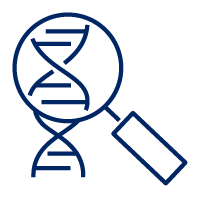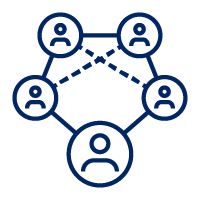On this page
-
Method of diagnosis of tuberculosis cases in NSW, 2023
-
Drug susceptibility of culture confirmed cases in NSW, 2023
-
Culture positive tuberculosis cases in NSW linked by whole genome sequencing
-
Outcome of epidemiological investigation into links to other cases in a whole genome sequenced cluster in NSW, 2023
-
Type of epidemiological link for cases in a whole genome sequenced cluster with a confirmed or possible link to another case in NSW, 2023
Method of diagnosis of tuberculosis cases in NSW, 2023
Most TB cases are diagnosed through laboratory findings, with 69% of cases having a positive TB culture and 20% of cases having a positive PCR (without a positive culture).
Drug susceptibility of culture confirmed cases in NSW, 2023
The majority of culture positive TB cases (87%) in NSW are fully sensitive to first line TB treatment. A small number of cases have either multi-drug resistance (MDR) (3%) or pre-extensively drug resistance (Pre-XDR) (<1%).
| Fully Sensitive to first line TB drugs | 305 | 87% |
|---|
| Monoresistance: Isoniazid | 30 | 9% |
|---|
| Monoresistance: Rifampicin | 0 | 0% |
|---|
| Monoresistance: Ethambutol | 0 | 0% |
|---|
| Monoresistance: Pyrazinamide | 3 | 1% |
|---|
| Resistant to 2 or more first line TB drugs (but not MDR) | 1 | <1% |
|---|
MDR
| 11 | 3% |
|---|
Pre-XDR
| 1 | <1% |
|---|
XDR
| 0 | 0% |
|---|
Whole genome sequencing (WGS) cluster analysis, NSW, 2023
Culture positive cases found to be linked to another NSW case by WGS are classified as being in a cluster. Linked cases are within 12 single nucleotide polymorphisms (SNPs) of another case in the same cluster.

36 (10%)
Culture positive cases linked by WGS

30
WGS clusters
where new case was added
Outcome of epidemiological investigation into links to other cases in a WGS cluster in NSW, 2023
The first case in the cluster is the index case. Epidemiological investigations found a confirmed or possible link for 45% of cases in WGS clusters in 2023. A confirmed link is when there is direct contact between two cases while the first case was infectious in both place and time. A possible link is when there are similarities in place and time but a direct link is not identified when the first case was infectious.
| Index case | 1 | 3% |
|---|
| Confirmed link | 11 | 31% |
|---|
| Possible link | 5 | 14% |
|---|
| Unknown link | 12 | 33% |
|---|
| No plausible transmission within Australia1 | 7 | 19% |
|---|
Type of epidemiological link for cases in a WGS cluster with a confirmed or possible link to another case in NSW, 2023
The most common type of link, when known, to another case in the cluster was household, family and close friend links (38% of cases), followed by community linked (25%). Community links can include sports, places of worship and other community groups.
| Household, family, close friend | 6 | 38% |
|---|
| Community | 4 | 25% |
|---|
| Workplace | 5 | 21% |
|---|
| Other | 1 | 6% |
|---|
Notes
- Case was not resident in Australia while earlier cases in the cluster were infectious.
- Data for this report was extracted from Notifiable Conditions Records for Epidemiology and Surveillance, NSW Ministry of Health on 24 September 2024. Additional data on whole genomic sequencing was extracted from TB WGS Epi REDCap Project Database.
Clinical presentation
2023 report
Outcomes
